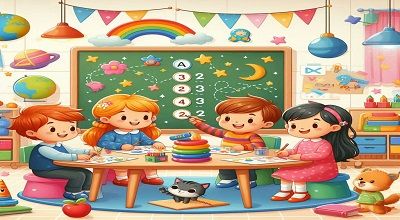Activities to Enhance Children’s Focus
Activities to enhance children’s focus in the classroom are crucial for effective learning. Here are seven activities that can help improve children’s focus:
- Mindfulness Exercises: Incorporate short mindfulness activities into the classroom routine. This can include deep breathing exercises, guided imagery, or simple stretches. These activities help children become more aware of their thoughts and feelings, promoting better focus and attention.
- Brain Breaks: Integrate short breaks throughout the day to allow children to recharge and refocus. Brain breaks can involve quick physical activities like jumping jacks, stretching, or dancing to music. These breaks help release pent-up energy and improve concentration.
- Interactive Learning Games: Use interactive games and activities that require active participation from all students. Games like educational scavenger hunts, classroom jeopardy, or educational board games engage children’s minds and keep them focused on the learning task at hand.
- Multi-Sensory Learning: Incorporate multi-sensory learning activities that appeal to different learning styles. For example, use tactile materials like clay or sand for hands-on learning, incorporate music or rhythmic activities for auditory learners, and use visual aids like charts or diagrams for visual learners.
- Task Rotation: Break up longer tasks or lessons into smaller, manageable segments. Rotate between different types of activities, such as group discussions, independent work, and hands-on projects, to maintain children’s interest and attention throughout the day.
- Incorporate Movement: Allow for movement within the classroom by incorporating activities like standing desks, yoga breaks, or simple stretching exercises. Physical movement helps stimulate blood flow to the brain, promoting better focus and cognitive function.
- Structured Routines: Establish consistent and structured routines within the classroom. Communicate expectations and transitions between activities. Predictable routines help children feel more secure and can reduce distractions, allowing them to focus more effectively on learning tasks.
Last Words
By incorporating these activities into the classroom environment, teachers can create a supportive and engaging atmosphere that fosters children’s focus and attention, ultimately enhancing their learning experience.
